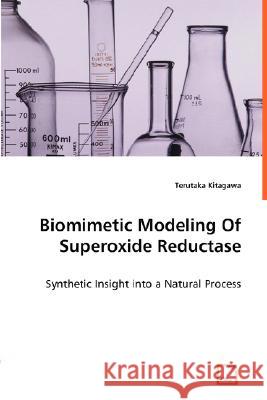Biomimetic Modeling Of Superoxide Reductase - Synthetic Insight into a Natural Process » książka
Biomimetic Modeling Of Superoxide Reductase - Synthetic Insight into a Natural Process
ISBN-13: 9783836467452 / Angielski / Miękka / 2008 / 188 str.
SOR is a non-heme thiolate-ligated metalloenzyme, consisting of a ferrous center ligated by four histidines and a cysteinate residue. It is responsible for superoxide detoxification in anaerobic and microaerophilic organisms by reducing superoxide to hydrogen peroxide. A novel biomimetic model of the active site of SOR, [Fe(II)cyclam-PrS]+ is described. This complex reacts with superoxide under protic conditions at cryogenic temperatures to form the intermediate [Fe(III)cyclam-PrS(OOH)]+. This is a rare example of a high-spin Fe(III)-OOH species, and is the first reported example of a high-spin non-heme Fe(III)-OOH containing a trans thiolate. Using a synthetic approach to achieve biomimicry, new insight into the natural role of thiolates in metalloenzymes is described.
SOR is a non-heme thiolate-ligated metalloenzyme, consisting of a ferrous center ligated by four histidines and a cysteinate residue. It is responsible for superoxide detoxification in anaerobic and microaerophilic organisms by reducing superoxide to hydrogen peroxide. A novel biomimetic model of the active site of SOR, [Fe(II)cyclam-PrS]+ is described. This complex reacts with superoxide under protic conditions at cryogenic temperatures to form the intermediate [Fe(III)cyclam-PrS(OOH)]+. This is a rare example of a high-spin Fe(III)-OOH species, and is the first reported example of a high-spin non-heme Fe(III)-OOH containing a trans thiolate. Using a synthetic approach to achieve biomimicry, new insight into the natural role of thiolates in metalloenzymes is described.











